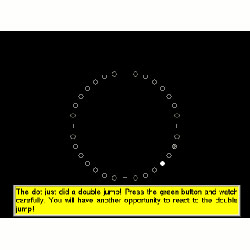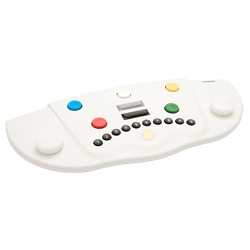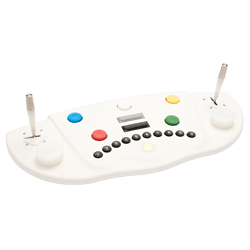
Vigilance - VIGIL - 1 Year License
Model 64043
Assessment of attention under continuous stress in the form of sustained vigilance in a situation with few stimuli. Applicable for people aged 6 years and over.
Test Overview
The assessment of vigilance based on monotonous monitoring tasks is realistic, valid, and highly reliable.
Main Areas of Application
- Clinical psychology
- Aptitude diagnostics
- Aviation psychology
- Sports psychology
- Industrial and organizational psychology
- Educational psychology
- Decisions regarding school and career selection
Theoretical Background
The demands on vigilance are determined by the following factors: During a longer testing time, the respondent is required to show continuous attention. The relevant signals appear randomly and do not automatically attract attention. This requires a relatively low intensity of stimulus presentation and a low frequency of critical incidents. Generally, a maximum of 60 critical stimuli per hour are suggested. The drop in performance during vigilance experiments is due to the decrease in the activation level of the respondent accompanied by the growing reaction latency. According to the neurophysiological activation theory, the cortex is insufficiently stimulated by the increasing reticular activation system (ARAS) due to a lack of stimuli. The cerebral cortex does not receive sufficient alarms necessary to maintain certain activities, which leads to mental fatigue and a decrease in performance efficiency. This is the context in which the term overstrain through under stimulation.
Administration
A brightly flashing dot travels along a circular path in small jumps. Sometimes, however, the dot takes a double jump to which the respondent has to react by pressing a button.
Test Forms
- Standard test form S1 (Quatember-Maly): The individual dots of the circular path are shown on the monitor as small circles. This form differentiates only among performances that are significantly below average (especially suitable for the examination of patients with apparently significant vigilance deficiency).
- Standard test form S2 (Muggenburg): In this form no circular path is shown on the monitor. The respondents have to estimate whether the flashing dot has taken a double jump (crucial stimulus) or not.
- Standard test form S4 (Muggenburg-66): It equals standard test form S2, only that the testing time was increased to 66 minutes. The frequency of crucial stimuli in standard test forms S2 and S4 is significantly lower than in S1.
Scoring
The following variables are calculated: Number of correct, Number of incorrect, Mean value of reaction time correct (sec.), Gradient of correct and Gradient of reaction time correct together with the associated measures of exactitude.
Reliability
Depending on the test version and the comparison sample, the following split-half reliabilities were obtained for the main variables: Number of correct: r=0.65 – r=0.95; Number of incorrect: r=0.69 – r=0.93, Mean value of reaction time correct: r=0.87 – r=0.99.
Validity
Criterion validity is given: all the criteria required in the most important theories for the measurement of vigilance are met. Tests of extreme group validity found that patients with right hemisphere cerebral lesions obtained significantly worse results than patients with comparable left hemisphere brain injury.
Norms
S1: sample of adults N=292, sample of children / young people aged 6 – 17 N=619, Swedish job-seekers N=245, traffic-psychological clients N=143 and neurological patients N=51. S2: Austrian norm sample N=271, sample of psychiatric patients N=111, Swedish job-seekers N=490 and Swedish applicants for technical occupations N=367. S4: Comparison scores of N=114 patients with sleep apnoea are available
Testing Time
Between 30 and 70 minutes (including instruction and practice phase), depending on test form.
VTS System Overview
The Schuhfried VTS enables computer-assisted application of a large number of highly diverse psycho-diagnostic tests and measuring procedures. In developing the system much emphasis was placed on transparent structure and largely uniform design. It is therefore simple to operate and easy to understand and does not require any special computer skills.
The VTS basic module is required for administration of any of the available tests.
The Schuhfried VTS supports the administration of both single tests and test batteries. Many of the single tests are available in different test versions. These test versions may differ, for example, in terms of test duration or difficulty or may be parallel forms. They are characterized by different parameters reflecting specific test requirements. They have been designed for administration to a specific population (e.g. psychiatric patients, children, etc.) or for special measuring purposes (e.g. repeated measurements). Test batteries are compiled from the available single tests and test versions.


